
Looking round the main woodland areas, especially in wintertime, it is obvious that the main type of ground cover is brambles - not very luxuriant, not very dense. (That's except in some areas of beech trees where there's no ground cover at all.) In fact those brambles receive so little summer light that they struggle to exist at all, producing strong enough stems to trip us up, a reasonable array of white and pinkish flowers, but little or nothing in the way of fruit.
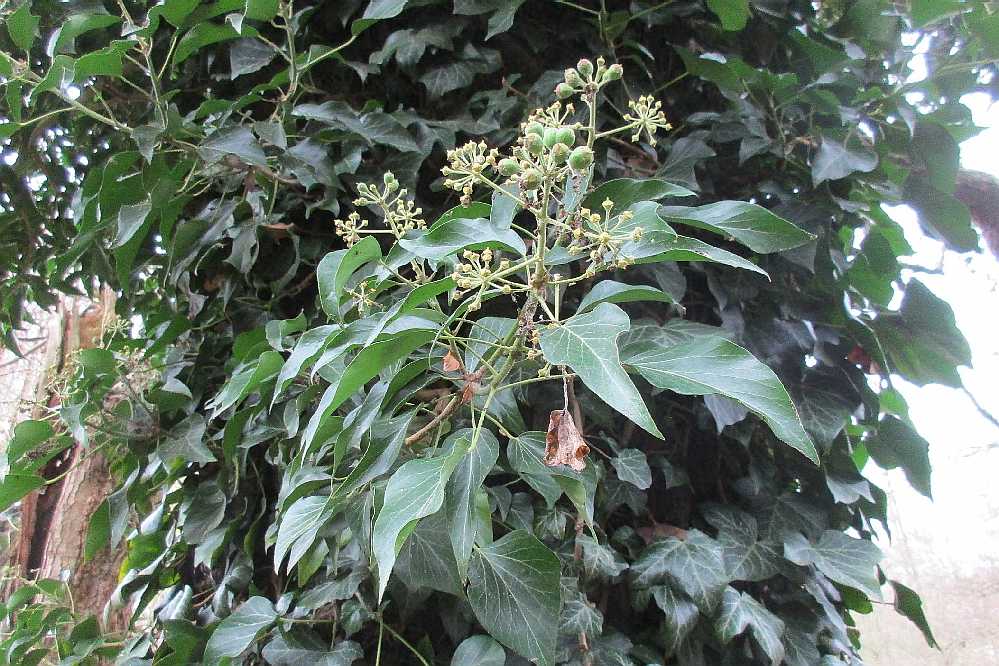 |
Mention should also be made of the normally ignored ivy. In an earlier page it was shown covering some shaded ground, and it is well known as a tree climber of course. It uses the host tree simply for support: it is not a parasite stealing nourishment. Some folk nevertheless consider that a heavy burden is dangerous, particularly when fully exposed to winter gales. Others argue that birds can nest there, and it is undoubtedly a useful source of winter nourishment for bees and other insects when the apparently insignificant flowers appear and become fruits, as in the early December picture. |
| There are some ferns in amongst the brambles or growing on their own in even denser shade. Ferns are green plants alright but they're not flowering plants. All ferns produce microscopic seeds, 'spores', usually brown, on the backs of the leaves, 'fronds'. Strangely, those spores don't produce another recognisable fern. Instead a different, much smaller life form is produced: we're never likely to spot one and they don't have a common name. It's the function of this 'gametophyte' to produce yet more spores, male and female this time, which in turn complete the life cycle back to a recognisable fern. For more detail you could put something like 'fern life cycle' into a search engine. |
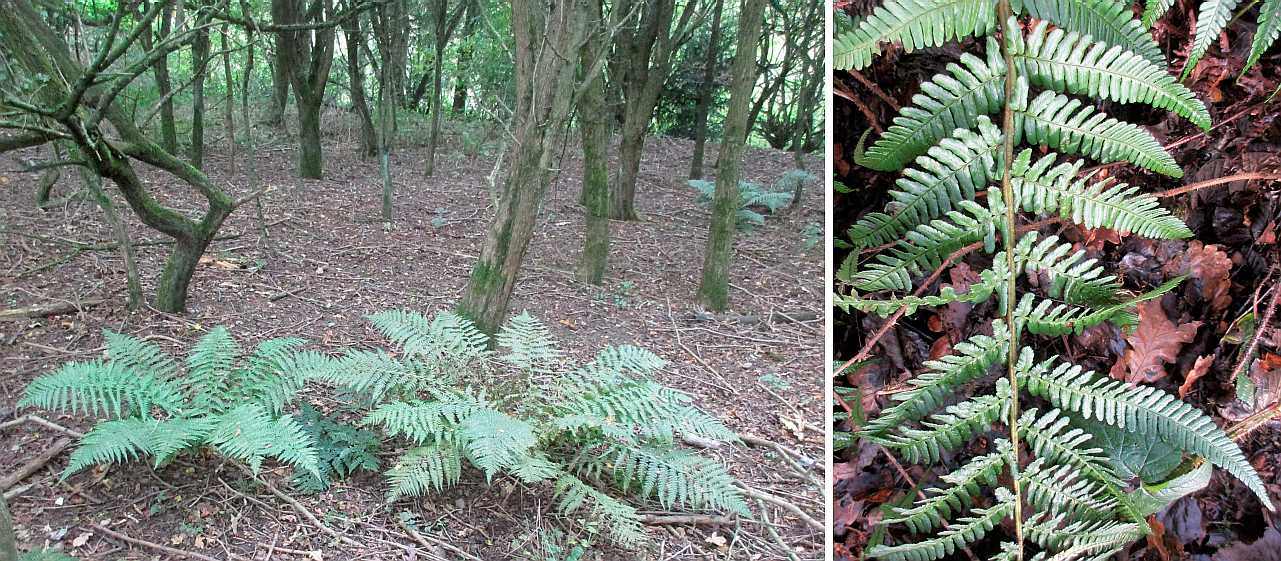 |
 |
Our commonest fern, with the curious name of "Male Fern" (Dryopteris filix-mas), shown in the upper picture tends to wither away in the winter with some fronds staying green while others disappear. The Hart's Tongue fern, Asplenium scolopendrium, remains green all year: this picture on the right was taken in early January. There's not much to be seen of our other fern, the "Broad Buckler Fern" (Dryopteris dilatata) in winter. Comparing fern fronds, on the left: If the stem has branches which have leflets then it's male fern. If the stem has branches which have branches which have leaflets then it's broad buckler fern. There's a good "Fern-Guide.pdf" here from the British Pteridological Society, describing nineteen of the commonest UK ferns. |
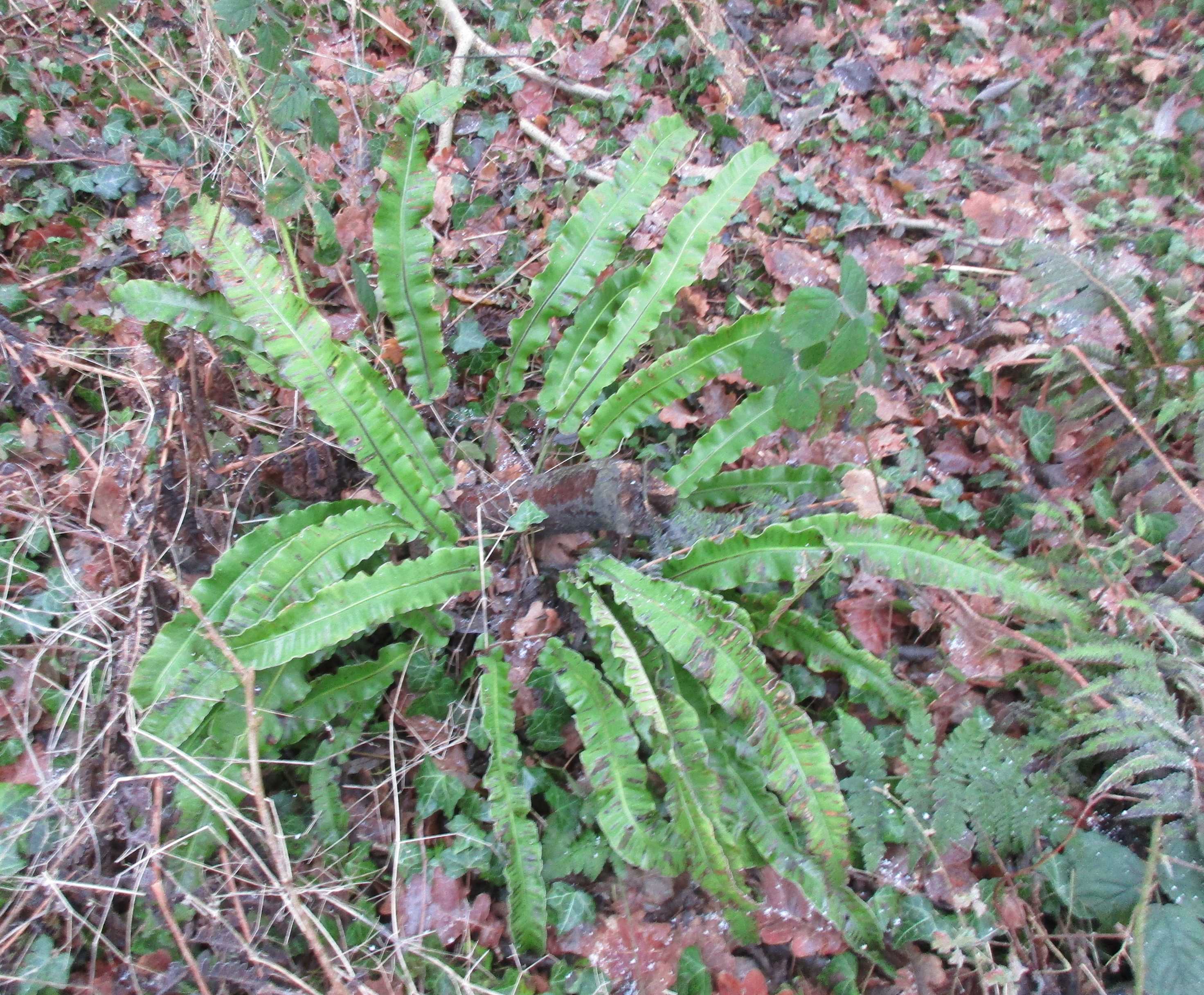 |

These are ferns producing spores in August. They are the non-sexual microscopic spores mentioned above: the visible growths producing them are called sporangia. From left to right: broad buckler; broad buckler; male; male; hart's tongue.
OK, so those are our ferns: next we come to our bryophytes! This is another group of small, green, non-flowering plants, including and especially the mosses.
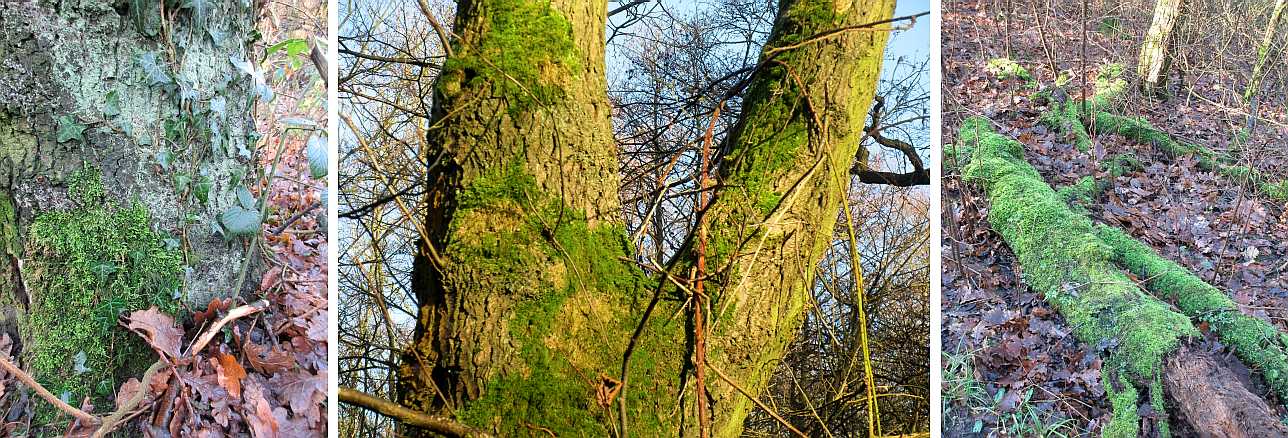
The left-hand picture shows that any tree trunk may be playing host to a number of plants. In this case it's easy to spot some ivy leaves, plus the light-green moss and the sage-green encrustation which is a kind of alga (more on that further down the page). Mosses thrive particularly in damp, humid conditions but these can include the upper trunks and branches of mature trees. However, they really come into their own on dead timber, particularly after years on the ground.
It is likely that a real bryophyte expert would be able to find a large number of different types of mosses within our Nature Reserve, the woodland areas particularly. These pictures are all different views of species of Hypnum: they don't seem to have any universally recognised common names though they occur world-wide apparently.

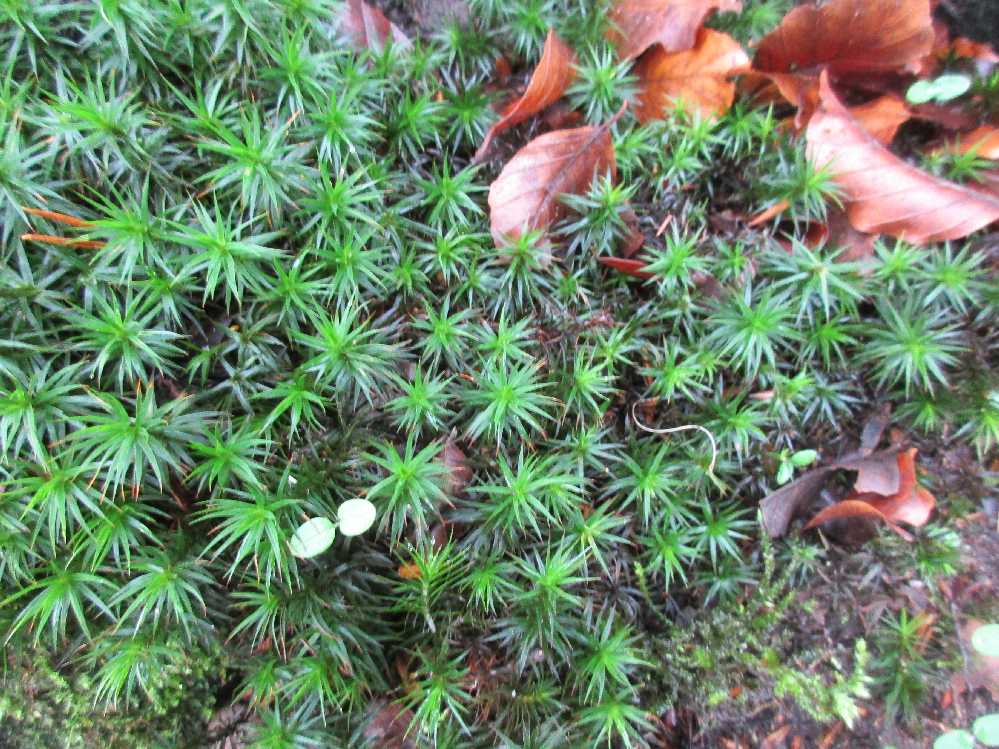 |
The most obvious mosses in our Nature Reserve are those on the trees and fallen timber. But some simply grow on the ground. The common smoothcap Atrichum undulatum pictured on the left was growing on the ground in the crook of a mature beech tree in midwinter. On the right we have the 'crisped pincushion', Ulota crispa. But you may come across other mosses as your feet sink into some of the wetter patches away from the paths. |
 |
An even more 'lowly' form of plant life is a lichen, defined as a composite organism usually of a fungus and an alga! In practice they are quite small, most less than one inch tall or thick; may be almost any colour except blue; grow on almost any dead surface such as rocks, tree bark and dead wood; and have a variety of means of reproduction, both sexual and non-sexual, 'vegetative'. They effectively live on rainwater plus anything they can derive from their host surface. They are therefore very sensitive to air pollution or acid rain, so it is encouraging to note that they are so abundant in our Nature Reserve. It is reckoned that there are something like one thousand five hundred different types in the UK, so ours is a very modest collection. But an expert would undoubtedly find others besides those shown below.
Netted Shield lichen, Parmelia sulcata :: Common greenshield lichen, Flavoparmelia caperata :: Physcia sp.
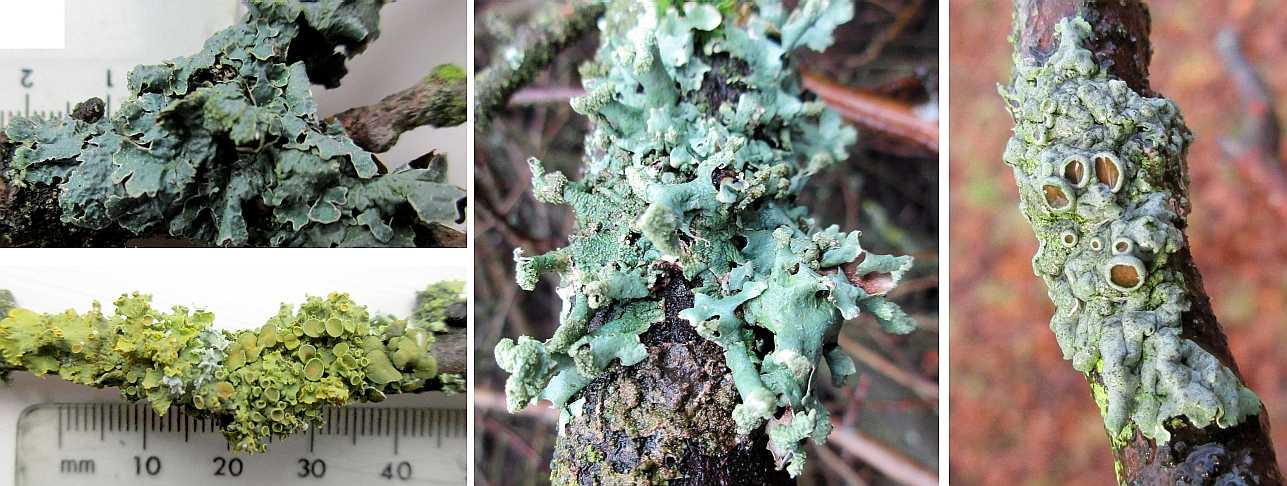 Common Orange(!) lichen, Xanthoria parietina :: Common greenshield lichen, Flavoparmelia caperata :: Physcia sp.
Common Orange(!) lichen, Xanthoria parietina :: Common greenshield lichen, Flavoparmelia caperata :: Physcia sp.The mini-moon-craters, plain or coloured, and the short, stubby mop formations are involved in sexual reproduction. There is a tremendous amount of detailed information available online: just put 'lichen' or any of the individual names into a search engine.
So then finally we come to the most numerous plants of all, the smallest green things we can see - those green spots, almost a powder, on virtually any otherwise unoccupied surface.
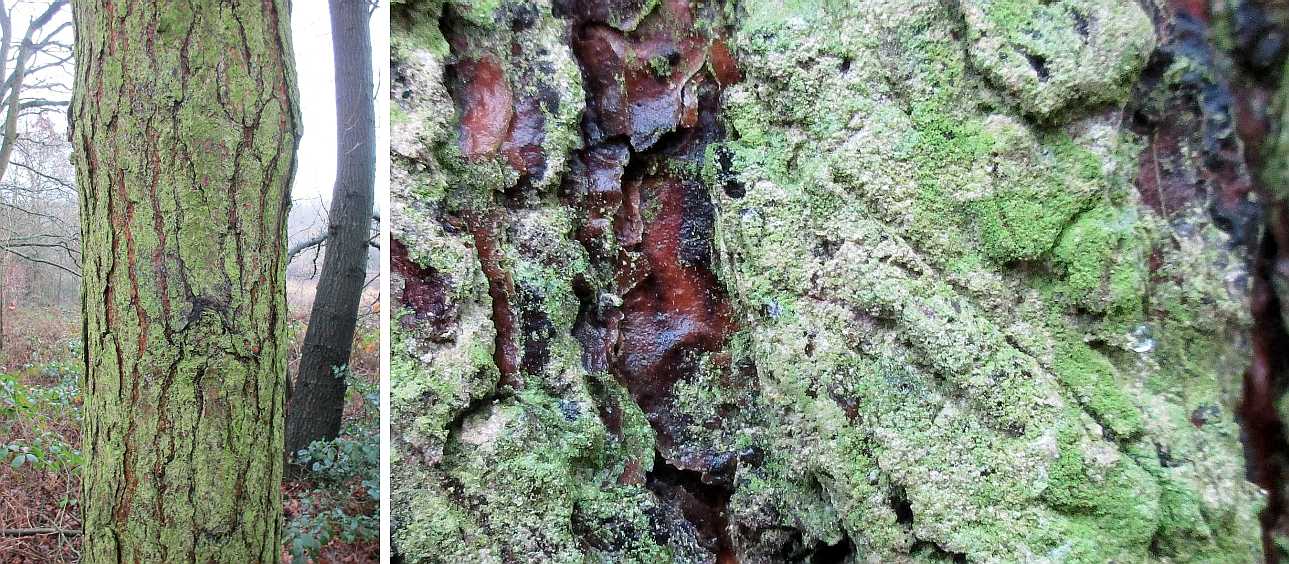
| It's an alga! Again, it's not a parasite: it's photosynthesising on its own behalf, using rainwater and little else. It never does anything dramatic - no flowers or fruits or toadstools or anything like that. This one is a species of Pleurococcus. There are literally countless different kinds of algae, the biggest numbers and the biggest structures being seaweeds - green seaweeds, brown ones and red ones too - all of no concern whatever on our Nature Reserve. But more modest freshwater filamentous green algae occur in the water of some of our little ponds around the Reserve. It's almost certainly a Spirogyra, of which Wikipedia lists over 500 species! |
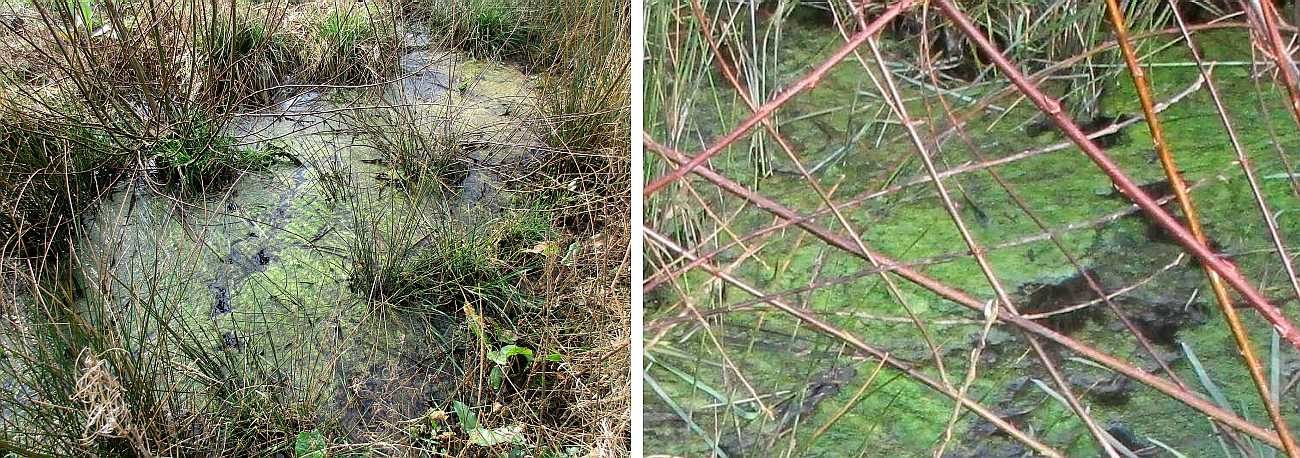 |
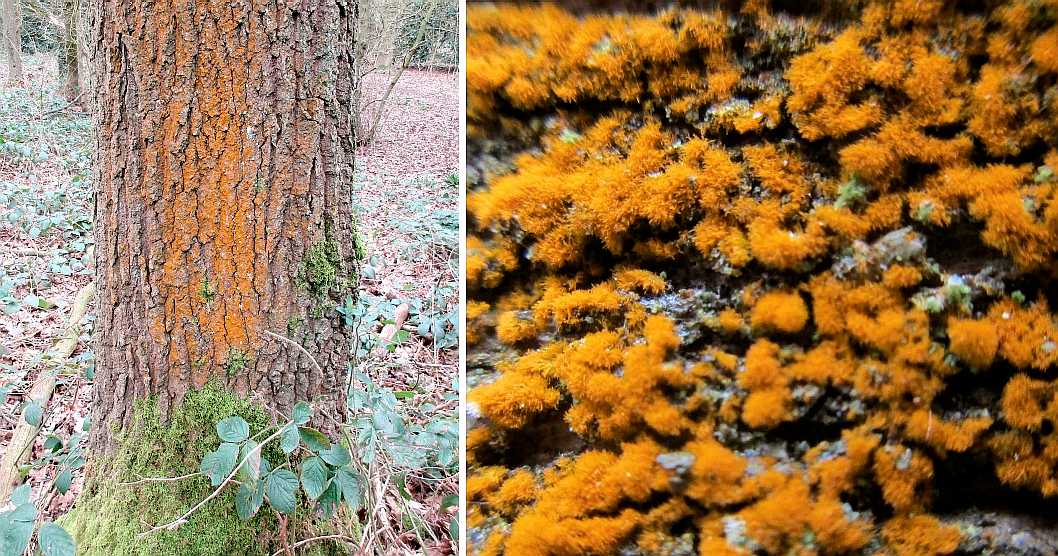 | This orange growth is another alga, delighting in the name Trentepohlia. It's very common in some woodlands, but we have it on only a few of our trees. It IS a green alga, but the green colour is masked by other ('carotinoid') pigments, in much the same way that copper beech leaves seem to be brownish in colour. |
The total photosynthetic activity of all these apparently insignificant green plants must be very considerable though there is no easy way to quantify it in terms of CO2 used up, 'sequestered'. Apart from some ferns, they are evergreens, able to make maximum use of winter light and any available warmth.
Nearly all identifications on this page were obtained through the wonderful iSpot service of the Open University and Open Science Laboratory.
<<<<<<<<<<+>>>>>>>>>>
Click to return to the Home Page, or -
Animal Life
Trees • Flowers • Fungi
Spring • Summer • Autumn • Winter
<<<<<<<<<<+>>>>>>>>>>
Click to return to the Home Page, or -
Animal Life
Trees • Flowers • Fungi
Spring • Summer • Autumn • Winter
| LINKS YOU MAY FIND HELPFUL iSpot has been mentioned above. The British Pteridological Society provides a Fern Guide online. Roger Golding has provided a very comprehensive website guide to ferns, horsetails, clubmosses and quillworts. The Nature Spot library includes relevant sections towards the end of its tabulation. British lichens are at britishlichens.co.uk! And there's an active British Lichen Society too. |